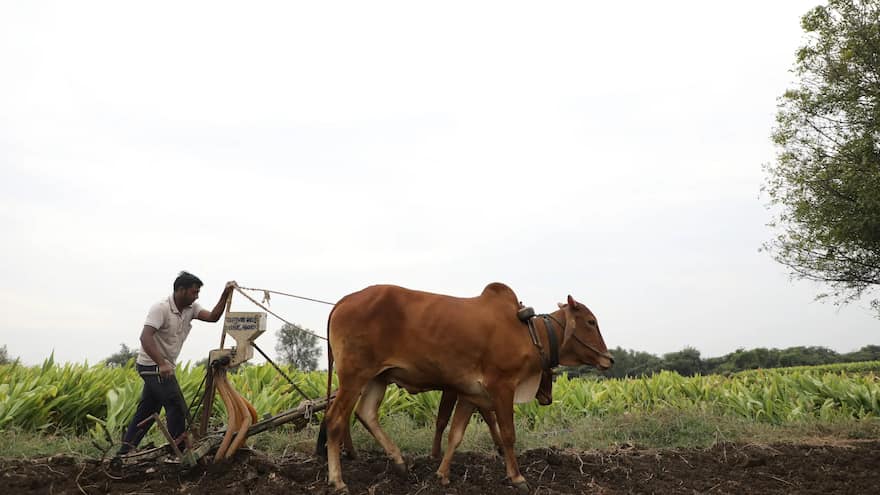India is largely an agrarian society, with about 70% of our population living in rural areas. 40% of India's rural population consists of direct cultivators. Feeding the entire country is a full-time job that is quite resource-intensive. Food grains are in great demand at all times, which is why rice and wheat are the most cultivated crops, followed by barley, millets, corn, etc. However, because almost 70% of the country identifies as vegetarian, even more resources are dedicated to growing vegetables and fruits.
With such large-scale cultivation, irrigation, and harvesting of crops, the soil suffers the most, as it tends to lose its fertility over many consecutive cultivation cycles. When modern pesticides and synthetic manure are used, the soil almost becomes toxic. These synthetic chemicals, when used in huge quantities, end up in the crops eventually, which, upon consumption, may lead to diseases like cancer. Adopting alternative farming methods is the need of the hour, as current farming trends do not give the soil much time to naturally replenish its nutrients.
Organic farming is an agricultural process where all sources of pest control are derived from animal manure or plant waste. This process greatly helps in restoring, maintaining, and improving ecological balance. Organic farming follows four principles, which are the principles of health, ecology, fairness, and care.
- Health of the ecosystem, people, and communities.
- The balance of ecosystems and the environment/nature.
- Better human relationships and quality of life.
- Environmental considerations in the present and the future
Sustainable farming hopes to achieve a healthy environment, economic profit, and social equity. It also helps reduce greenhouse gas emissions and conserve energy. Ending hunger, achieving food safety, and improving nutrition are also some objectives of sustainable farming. Sustainable farming involves using renewable energy sources like hydroelectric, wind, and solar power to keep farming practices as eco-friendly as possible. The following are some types of sustainable farming:
Crop rotation. Certain pests prefer specific crops. In order to break their reproductive cycle, thereby minimizing the need for chemical fertilizers and helping replenish soil nutrients, crop rotation is employed. Also one of the most preferred sustainable farming methods, it involves planting different crops throughout the year to achieve the aforementioned objectives.
Permaculture. Permaculture aims to reduce waste and increase efficiency. Crops are grown without tillage, using sheet mulching, hoophouse gardening, and other techniques.
Cover crops. Farmers sometimes prefer to keep land cultivated continuously with just one crop, thereby reducing soil fertility. Planting cover crops like clover and oats can remedy this problem. Suppressing weed growth, preventing soil erosion, and reducing the need for chemical fertilizers are also additional goals here.

Soil enrichment. Soil nutrients may be depleted after harvesting. By leaving crop residue after harvest and adding plant compost or animal manure, these nutrients may be replenished.
Natural pest predators Sustainable farming views farming less as a factory and more as an ecosystem. Introducing animals and birds that are natural pest predators can nullify chemical pesticide usage.
Biointensive integrated pest management IPM, or integrated pest management, will make the use of chemical pesticides a last resort by relying on biological methods of pest control.
Polyculture farming. Here, multiple crop species are grown in the same region. These species complement each other and compensate better for seasonal changes while optimizing nutrient absorption from the soil.
Agroforestry. Agroforestry is the practice of growing trees and shrubs on farm and grazing land in areas and regions that are prone to desertification. This provides long-lasting and diverse land uses.
Biodynamic farming. Employing holistic and ecological growing practices based on anthropological philosophies while focusing on composting animal manure and the cultivation of supplementary or cover crops is biodynamic farming.
Efficient water management By selecting crops according to an area's weather patterns, water usage and wastage of money on unnecessary irrigation infrastructure are reduced.
Organic and sustainable farming practices are the need of the hour as soil pollution and erosion become greater threats with each passing day. With a significant reduction and, in some cases, elimination of synthetic pesticides, crops grown are safer for human consumption as they'll contain almost no pesticide residue, which is known to be cancerous. At the same time, such farming methods reduce air and soil pollution while reducing soil erosion and reducing the overall cost for farmers. With increased usage of renewable energy sources to run pumps and other agricultural machines, sustainable farming methods and organic farming practices increase the biodiversity of a region while making the endeavor economically profitable for the farmer, thus improving social equity. With a rapid growth in population that doesn't seem to slow down anytime soon, adopting alternative farming methods will make food production more sustainable and economically viable in the future, as the need for food in India and around the world is only going to increase. The only way to make sure that future generations will have food is to take care of the soil.


